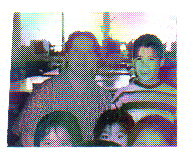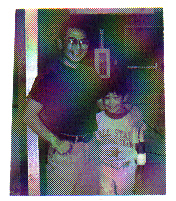Whats Happenin' at School?:
Whats Happenin' at
School?
Running Cross Country
This year cross-country running started even
before school started. The District meet was on the 19th of September
so the runners had more than a month to practice. Gail Fitka was the
cross-country coach and their practice started at 4:00 p.m. and
lasted until all the runners made it back to the starting
point.
When practice began there were 17 runners who went
to practice. The elementary runners ran 1.5 miles and the high school
runners ran 3.1 miles. But as the month started winding down some of
the runners quit and left Gail with only 12 runners. There were only
three high school girls (2 short of a team) and 9 elementary students
(4 girls, 5 boys).
They left for the district meet in Hooper Bay on
the 19th of September. The elementary students were required to run
1.5 miles and the high school had to run 3.1 kilometers on the Hooper
Bay coastal sand dunes. They ran according to different age groups.
Altogether there were over 250 elementary students who participated
in the races.
Some quotes from the coach and Marshall High
School participants:
Coach Gail Fitka: "I hope there are more students
that join cross-county next year. Everybody did well and several
participants placed in the top 10."
Charlotte Alstrom: "I had fun, and I got to see my
friend Wassily. But it was hard to run on the sand dunes."
Rose Fitka: "It was funky because they had a dance
in the afternoon.
Cheryl Hunter


Kindergarten
In Annie's Kindergarten they have been reading the
story, "Goldilocks and the Three Bears." The activities taught are
based on the story and the characters. We made Goldilocks and Three
Bears masks and the students will use them to act out the story. We
discussed the difference between real bears and make-believe bears.
In a large group activity the children acted out and identified the
concept of opposites. They also cut and pasted bowls, chairs, and
beds under the right category of the Three Bears.
In math the students were introduced to AB-AB
patterns. They used unifix cubes of two colors to make their own
patterns. They also used boy-girl-boy-girl, short-long sleeves and
long-short hair patterns.
Annie said she used bean bags and trays to teach
them the concept of "in-out." The students took turns tossing bean
bags while the others told where they landed. They located objects by
telling their position, above, below, on, off, in front, in back,
etc. I used the student work books to cover these concepts and also
manipulatives like bear counters and interlocking cubes. I also plan
to use colored macaroni or something similiar for an art project
using the AB-AB pattern.
First and Second
Grades
The first and second grades are working on
English, Spelling, Phonics, Math, Reading, Science, File Folder
Reading, Yupik, and Olga's computers. They've also started to learn
Spanish. They've learned how to say lots of words in Spanish. It is
fun to speak Spanish. They can speak Spanish any time.

Third and Fourth Grades
The third and fourth grades have begun their
Spanish language class with LYSD's Step Star Program. Colors and
greetings were in the first lesson. They are also enjoying their new
Health reading series with fiction, non-fiction and poetry about cats
and bears. Their D'Nealian cursive handwriting is getting easier to
write. All Math groups are continuing with basic skills, and the
"Mad Minute" timed practice is helping to increase our speed
in addition. Our class would like to thank everyone who took such
good care of our classroom plants during the summer. They all enjoy
them as our continuing science project.


5th & 6th Grades
Tom Andrew reports that,
"We've had a very enjoyable first quarter. The 4th
through 6th grades just recently had the "IPT" test. This test is
given by the Bilingual Dept. It measures the reading and writing
abilities of students grades 2-12.
Although we had a slow start, we are trying to
catch up in the Young Astronauts II satellite program that we
participate in twice a week on Mondays and Wednesdays at 10:00
a.m.
We also started the Middle School Spanish II about
three to four weeks late this year. We still do not have the
necessary materials to successfully learn this language. However, we
are striving to learn.
As the school year continues, we are getting into
harder math problems. This is when students really need to be on top
of their math. Each student must know the steps to solve problems.
Remember that a student can solve the current problems by what has
already been taught."
|  This collection of student work is from Frank Keim's classes. He wants to share these works for others to use as an example of culturally-based curriculum and documentation. These documents have been OCR-scanned and are available for educational use only.
This collection of student work is from Frank Keim's classes. He wants to share these works for others to use as an example of culturally-based curriculum and documentation. These documents have been OCR-scanned and are available for educational use only.








